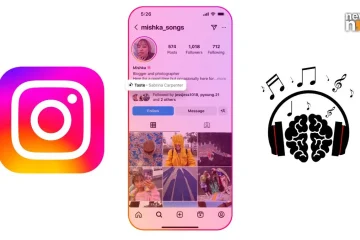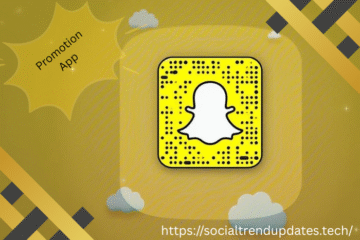LinkedIn Introduces Its Latest Puzzle Game: A New Affordable Way to Boost Engagement:
In a surprising and innovative move, LinkedIn has announced the launch of a new puzzle game designed to enhance user engagement on its platform. This latest addition aims to create an interactive environment that fosters connections, learning, and creativity among professionals. As LinkedIn continues to evolve, this new feature highlights the platform’s commitment to not just networking but also to providing enjoyable experiences that enhance professional growth.
Table of Contents
The Rise of Gamification in Professional Networking
Gamification—the integration of game-like elements in non-game contexts—has become a powerful tool in various industries, including education, marketing, and even human resources. By incorporating games into their offerings, platforms like LinkedIn can encourage users to engage more deeply with content and with each other.
- Enhancing User Engagement: The new puzzle game aims to capture users’ attention, encouraging them to spend more time on the platform. This increase in engagement can lead to more connections and opportunities, ultimately enhancing the overall value of LinkedIn for its users.
- Promoting Learning and Skill Development: Games often include challenges that require problem-solving skills, critical thinking, and creativity. By introducing a puzzle game, LinkedIn provides a fun way for users to develop and refine these skills, aligning with the platform’s mission to support professional development.
- Creating Community Connections: The social aspect of gaming encourages collaboration and interaction among users. By solving puzzles together or competing for high scores, users can forge new connections and strengthen existing ones, fostering a sense of community.
Features of the New Puzzle Game
The latest puzzle game on LinkedIn is designed with various features that aim to engage users and promote a positive user experience:
- Challenging Levels: The game consists of multiple levels with increasing difficulty, encouraging users to think critically and strategically. This structure not only keeps users engaged but also provides a sense of accomplishment as they progress through the game.
- Collaboration Opportunities: Users can invite colleagues or connections to join them in solving puzzles. This collaborative aspect enhances the social experience, allowing players to share strategies and celebrate victories together.
- Customizable Avatars: Users can create and customize their avatars, adding a personal touch to the gaming experience. This feature allows individuals to express their personality and engage more deeply with the game.
- Leaderboards and Achievements: To foster healthy competition, the game includes leaderboards that display top scores. Users can earn achievements for reaching milestones, further motivating them to participate and improve their skills.
- Integration with Professional Learning: The puzzle game is linked to various professional learning modules available on LinkedIn. As users complete puzzles, they can earn badges or credits that can be redeemed for courses, webinars, or other learning opportunities.
Benefits for Users
The introduction of the puzzle game on LinkedIn offers numerous advantages for users looking to enhance their professional experience:
- Fun and Engaging Learning: Traditional professional development methods can often feel tedious. The puzzle game provides a refreshing alternative, making learning enjoyable and interactive.
- Networking Opportunities: By inviting colleagues and connections to participate, users can strengthen their professional networks. Shared experiences in gaming can lead to deeper discussions and collaborations in real life.
- Skill Development: The cognitive challenges presented in the puzzle game promote critical thinking, problem-solving, and creativity—essential skills in today’s fast-paced work environment.
- Stress Relief: In the often high-pressure world of professional networking, the puzzle game offers a welcome break. Engaging in lighthearted gameplay can help reduce stress and improve overall well-being.
Potential Challenges
While the introduction of a puzzle game brings many benefits, there are also challenges that LinkedIn must address:
- Balancing Professionalism with Fun: As a professional networking platform, LinkedIn must ensure that the game aligns with its brand identity. It is crucial to maintain a balance between providing entertainment and upholding the seriousness of professional interactions.
- User Engagement and Retention: The success of the puzzle game will largely depend on how well it captures and retains users’ interest. Continuous updates, new levels, and additional challenges will be necessary to keep users engaged over time.
- Inclusivity: To ensure the game appeals to a diverse audience, LinkedIn must consider varying skill levels and preferences. Designing the game with accessibility in mind will be key to attracting a wide range of users.
Learning from Other Platforms
LinkedIn’s new puzzle game draws inspiration from successful gamification strategies employed by other platforms:
- Duolingo: Known for its gamified approach to language learning, Duolingo uses challenges, leaderboards, and rewards to keep users engaged. LinkedIn can incorporate similar strategies to enhance user interaction with its puzzle game.
- Kahoot!: This educational platform utilizes quizzes and challenges to promote learning in a fun, interactive way. LinkedIn can implement similar elements within the puzzle game to foster learning and collaboration among users.
- QuizUp: A trivia game that allowed users to compete against friends and strangers, QuizUp successfully created a community around knowledge sharing. LinkedIn can adopt this competitive element in its puzzle game to encourage interaction among professionals.
Future Prospects for Gamification on LinkedIn
As LinkedIn continues to explore gamification, the future looks bright. The puzzle game is just the beginning of a more engaging and interactive platform:
- Expansion of Game Types: In addition to puzzles, LinkedIn could introduce other game formats, such as trivia or simulation games, that focus on industry knowledge and skills.
- Partnerships with Educational Institutions: Collaborating with educational organizations could further enhance the learning aspect of the puzzle game, offering users access to expert content and courses.
- Events and Competitions: Hosting live events or competitions based on the puzzle game could drive engagement and community spirit, encouraging users to connect beyond the digital space.
Conclusion
LinkedIn’s introduction of a new puzzle game represents an innovative step toward enhancing user engagement on the platform. By blending fun and learning, LinkedIn is redefining how professionals interact, connect, and develop skills. The puzzle game not only provides entertainment but also fosters meaningful connections, making professional networking a more enjoyable experience.
As the platform evolves, the potential for gamification to enrich the LinkedIn experience is immense. By prioritizing user engagement and professional development, LinkedIn is poised to remain a leader in the realm of professional networking, offering users new and exciting ways to connect and grow in their careers.



